Has there ever been a time when we didn’t know what power lesbians were?
Certainly, when my best friend at uni (circa 2001) casually referred to one of his English Lit classmates as a “medieval power dyke” I immediately conjured a picture in my head, and it wasn’t Joan of Arc. My own lesbianism pre-dates this millennium, hewn from an ancient world before The L Word existed and Ellen hadn’t even come out. So, how did it come to pass that this phrase immediately evokes such strong images of shoulder-padded suits and tough, queer women getting shit done (probably while shouting a lot)? I don’t think there was a specific cultural inception, but rather a percolation of various feminist ideals that bubbled over during the 1980s, the decade that female masculinity went mainstream.
Probably the first intentional spotlighting of the power lesbians is in the second season of Sex and the City, in an episode which has a proper title, but let’s just call it by its more relevant name: “The one with the Power Lesbians.”
As per Carrie’s trademark annoying voiceover: “Charlotte had discovered Manhattan’s latest group to flaunt their disposable income — the Power Lesbian. They seem to have everything. Great shoes. Killer eye-wear. And the secrets to invisible make-up.”
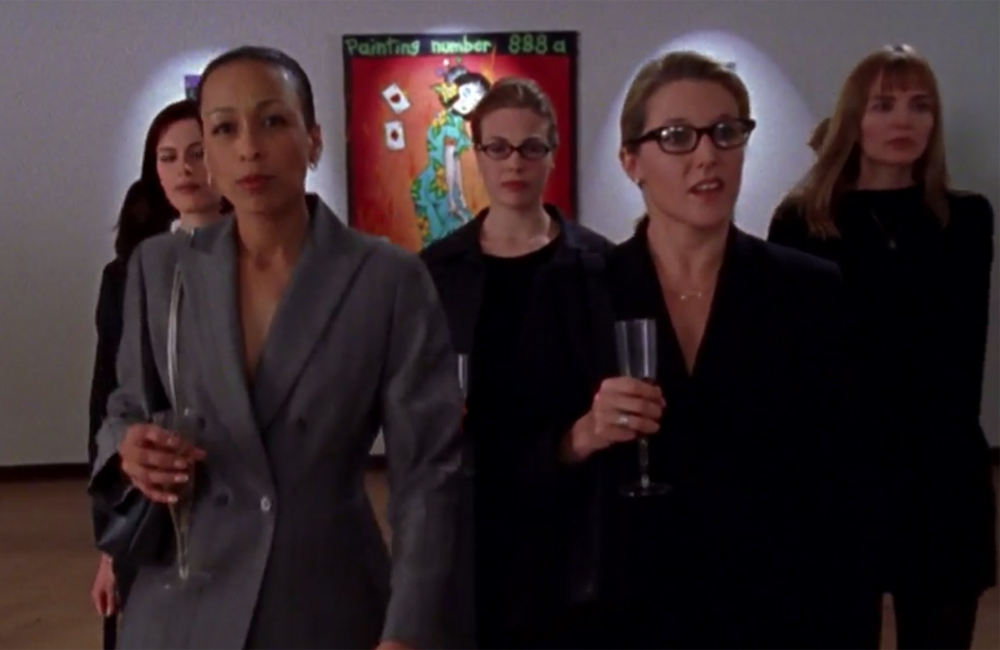
The storyline revolves around Charlotte being dazzled by the power lesbian clique, who she says are smart and funny (but let’s be real, she’s lusting after their giant mansions and art collections). Ultimately, Charlotte is rejected because you can dress yourself up in the sharpest suit, but you can’t be a powerdyke if you do not have at least some essential element of dyke within.
Thanks to the enduring appeal of a show you may have heard of called The L Word, there’s little doubt about who is everyone’s first-choice of fictional power lesbian: Bette Porter. She’s got it all: the suits, the shouting (bonus points if it’s into a flip-phone), the attitude that she can get whatever or whoever she wants. For me, that’s what distinguishes a true power lesbian; these aren’t women who’ve had a fortune dropped in their lap, they demonstrably crave control and aren’t afraid to take it, sometimes at any cost. That’s why although a bunch of The L Word cast wore suits throughout the show, it’s only the likes of Helena or Catherine Rothberg that really have the internal avarice to match the looks. I’m also going to throw Peggy Peabody into the ring because I think that all characters played by Holland Taylor automatically qualify as power lesbians.
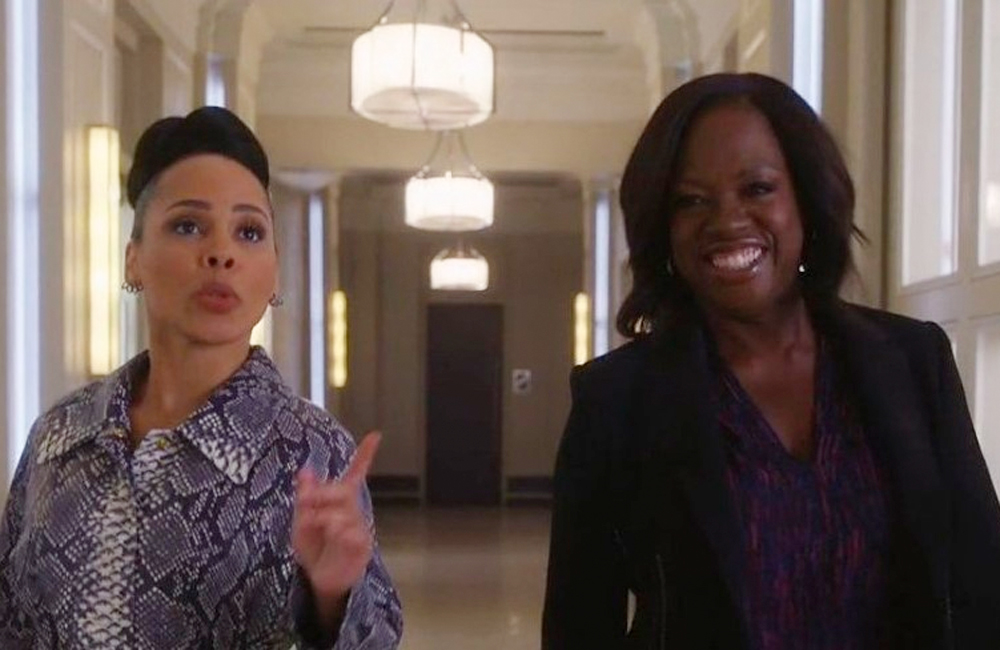
In recent years, we’ve had a proliferation of queer representation on TV, and though I’m not sure that the number of power lesbians has increased proportionally, there have been a few of note: Jeri Hogarth on Jessica Jones, Mimi Whitman in Empire, Tegan from How to Get Away With Murder, and Annalise Keating herself (I don’t care if she’s bi, she’s blatantly a power lesbian). While it’s sketchy as fuck that these women are usually dabbling in the greyer areas of morality (if not downright evil), it’s for pretty obvious reasons: these are all women trying to succeed in a man’s world, usually playing by men’s rules. How much they’re punished for that is generally an indicator of how shitty the showrunner is.
While it’s easy to understand the trope and motivations of these fictional powerdykes inhabiting worlds of endless melodrama, I get rather more unstuck when it comes to real-life power lesbians. Dykes in suits remain exotically alluring, perhaps because a steady job that involves business attire is but a dream for so many queers. But a cursory search for lists of power lesbians or couples shows that our definition gets a lot more flexible, littered with as many casually-dressed entertainment stars as besuited figureheads from the world of business or politics. Is there a difference between a “power lesbian” and a queer woman who just happens to have power? Or fame or money? Are those qualities all interchangeable?
Take Ellen DeGeneres — by any measure a successful lesbian, with wads of cash, and enormous cultural capital thanks to her subtle infiltration of living rooms across America and beyond. But can she be a Power Lesbian if her whole persona is built on subverting the stereotype, by playing the unthreatening dyke next door? I feel like any compiler of power lesbians that puts Ellen at the top just hasn’t sufficiently overthought it, which is surely a crime against queer culture. Whenever she pairs a dykey-looking blazer with a pair of trainers (which is to say always), is she purposefully downgrading the potentially dominant masculinity of sharp brogues or boxy heels to a more acceptable tomboyishness, or is she merely beholden to every lesbian’s desire for comfortable footwear?
At the other end of the spectrum, the tough-talking aggression of Jillian Michaels and Jackie Warner fits my arbitrary definition of the power lesbian personality type, and yet sportswear is their uniform. When Jennifer Lawrence made her infamous off-hand comment about “slutty power lesbians” I thought I knew exactly what she was talking about… how did this all get so complicated?!
Let’s get back to the basics. What exactly are the components we are all looking for in a power lesbian? For me, there’s got to be a suit, or at least a blazer. And it can’t be any old blazer, it must be a Lesbian Blazer. I once got a (straight) friend of mine into trouble when I introduced her to the concept of a lesbian blazer, which she then discussed loudly in an Oxfam with her mum, which attracted the attention of a presumed lesbian who had a go at them for ascribing sexuality to clothing, which just goes to show you should really be careful when charity shopping in the Isle of Wight. But I digress! What then is a Lesbian Blazer? I think it’s best illustrated by comparing it to not-a-lesbian-blazer, as so:
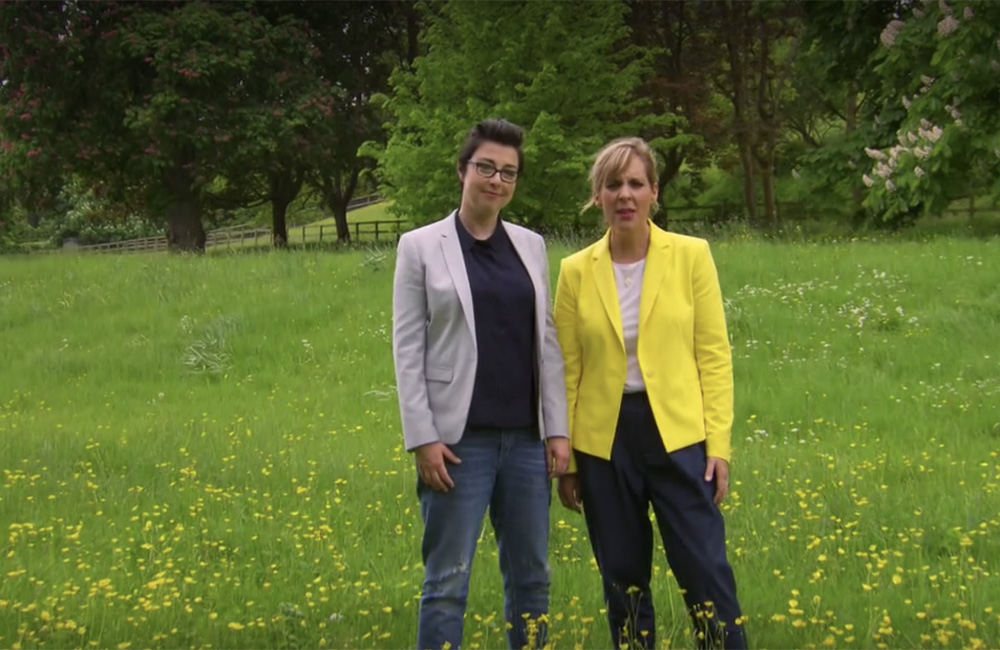
If that wasn’t clear enough, then try this:
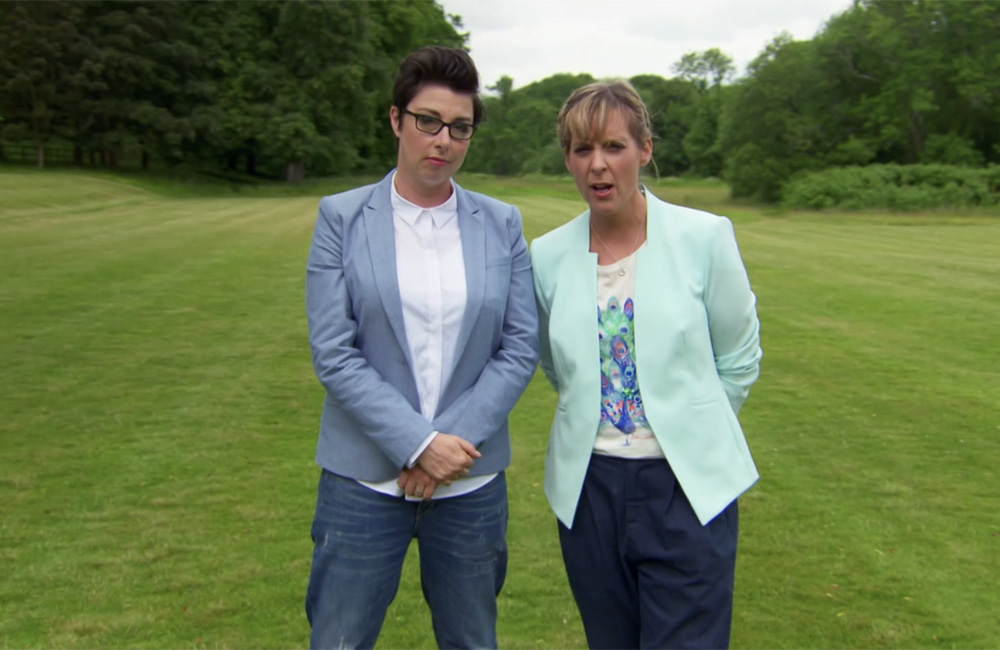
Still confused? What about:
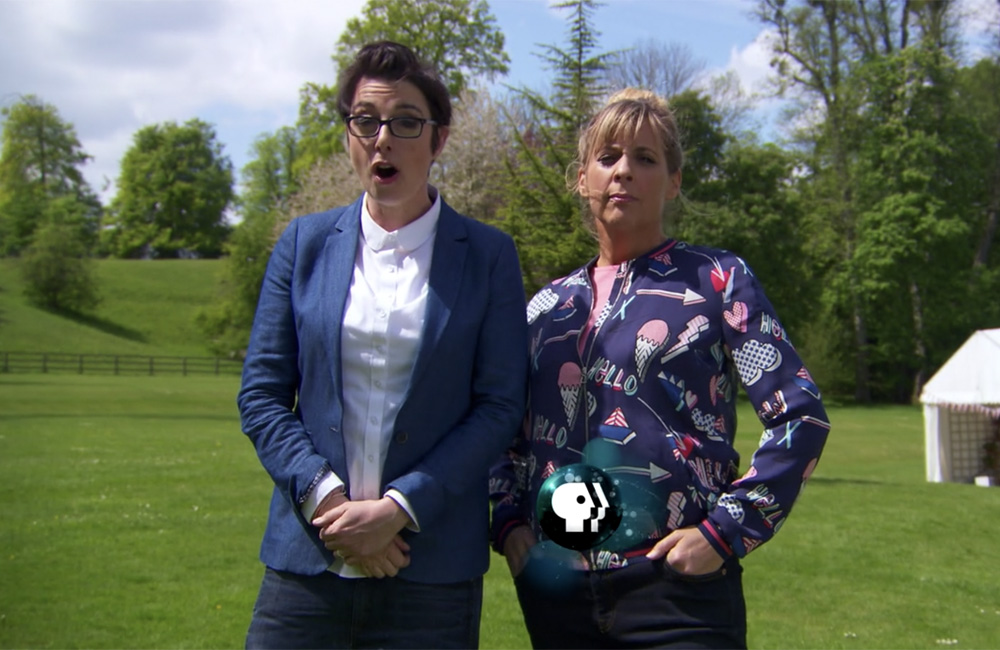
Excellent, glad we’ve cleared that up.
While our fictional lesbians were usually in it for their personal gain, I think I’m more interested in those who use real-life power for a wider purpose. That’s not just in the political sphere, where the de facto dress code of female politicians of the Western world for the past three decades have had sapphic overtones, with all those pantsuits and short haircuts making things terribly confusing. Thank heavens for Tammy Baldwin, Ruth Davidson, Jóhanna Sigurðardóttir, Ana Brnabić and many others who have actually put the lesbian into the power.
Yes, titans of the entertainment industry undoubtedly wield huge amounts of influence over our lives, but I’m not always convinced it’s for any purposes beyond perpetuating existing power structures. It’s mildly galling that Ilene Chaiken seems to tick all my traditional power lesbian boxes, but that’s only to be expected considering she used herself as the template for Bette Porter.
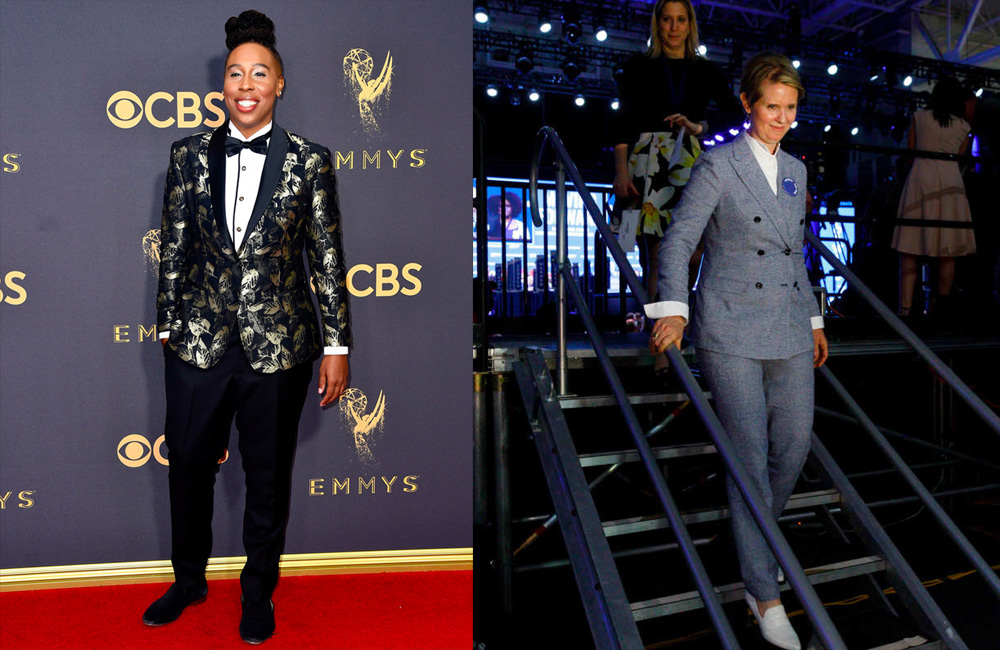
If I could pick two people to be my modern day standard of what a power lesbian should be, I’d go for Cynthia Nixon and Lena Waithe. Both are using the influence gained in one sphere to actively, positively change the world around them, from Waithe’s mentoring of hundreds of diverse screenwriters to Nixon literally sticking it to the man in the NYC gubernatorial campaign. Most importantly, they can both absolutely rock it in a power suit.⚡
Edited by Heather
![]()

Thank you Sally for this fascinating lunchtime distraction. Now I wonder where Power Lesbian fits in and/or overlaps with the Mommi vs Daddy debate?
Also the term may not have been around until the 80s, but..

Not only the suit but the fingers are at least a 10.
Oooh
😍😍😍
Hepburn definitely fulfills my definition of a power dyke!
Thank you for highlighting these trail-blazers, Sally.
Now the question is: power lesbian in the streets…?
Tofu-scoffing switchy cuddler in the sheets?…
Here you are again with the tofu
I’m easily pleased!
Did you hear about the fabled perfect Tofurkey
With my fancy air fryer, I plan to have plenty of that this holiday season
Why are you all on another continent with your fancy kitchen devices?
AMERICA land of the fancy kitchen devices
And acres of fine marble countertop
So many cabinets
Full of fancy kitchen devices
Snow how are we supposed to date with Sally watching then?..
It’s ok, I get email notifications.
I feel like I’m on a gay watch list or something
oh DAMN that is brilliant! kudos kudos
*bows* I came across it just yesterday and couldn’t resist the synchronicity
you are on FIIIIIRE
Chandra if you’re any more on fire, you’ll be like a queer Human Torch Gay Blazer
#lifegoals
wait wait wait didn’t you tell Sally she could watch on another thread?
OR ARE THERE TWO OF YOU
I’m fairly sure my evil twin is dead.. fairly.. but she might have escaped the UK?
What, like in Shakira’s She Wolf song?
I’m already distracted by your fancy tofu machine, Shakira might tip me over
That’s why my kitchen is also stocked with a Japanese tofu press! (fancy)
Jeri Hogarth would be worth death by a thousand cuts
” just hasn’t sufficiently overthought it, which is surely a crime against queer culture.”
This. And this whole essay. Wonderful !
I am so blazer-illiterate I need labels on the photos. The left model has the lesbian blazer?
Your lesbian blazer-dar is strong!
Yes, that’s Sue Perkins on the left, of Mel and Sue / Great British Bake Off Fame.
Someone else told me yesterday they didn’t know who it was and I was astounded but also happy we can all learn from this experience.
Those pics pretty well made me burst into flames.. that’s lesbian blazers for you
Blazers of glory
Comment award ^
Goodness. I didn’t know who they were either, I thought they were friends of yours actually.
…Particularly wonderful friends to put up with being photographed out in the middle of nowhere with a succession of dubious wardrobe changes.
“Mel” particularly, goddess bless her for being such a trooper to wear those weird jackets you espressly chose for her after scouring all those thrift shops (or perhaps your mother’s closet). Wow I thought, those two friends of Sally’s are really amazing, what a terrific chosen family.
Now that scenario has deflated like a wobbly soufflé. And I’m feeling quite Baked Off.
Thank you Deli, it wasn’t just me! We Canadians don’t know from UK media I guess
Chandra I thought I was such a heretic thank you !
It occurs to me that I haven’t watched any cooking show since Laura Calder’s French Food at Home ! What can I say, Laura looked so bedroom-scrumptious, omfg. Top Chef mais oui. Or rather, Ouuuiiiiii.
All that heat in a Canadian show. Is that why Nature packs us in snow half the year I wonder.
Aucune idée, but there must be some good reason
You’re not alone. I didn’t know either
I know her character wasn’t a lesbian, but the first character i saw on tv that exuded power lesbian energy was CC Babcock. I just remember feeling a deep connection to her. I then felt it when I started watching the L word with Bette and now I mostly get my fix w JDR as Brianna in Grace and Frankie. Sometimes with Paulina in Casa de las Flores.
There’s something irresistible about the clothes, the confidence, the power.
I liked CC Babcock alot
“thank heavens for ruth davidson” ????????????????????????????
Upon reflection, those words don’t quite go together…
Ugh this is perfect, thank you.
My #1power issue Related hope was that a post like this would be written for it and here it is and it is PERFECTION
Wow, that’s super lucky because I actually really wanted to write about power stations
Sally, I know this is true and I love you deeply for it.
Sally this was fantastic
Thank you for sharing your wonderful gift with us
Standing ovation
This was a super fun read, thank you!
Thank you for the numerous articles on this site,
온라인바카라
Excellent article.
홀덤사이트
This topic is helpful.
슬롯사이트
Good job in providing it.
슬롯사이트